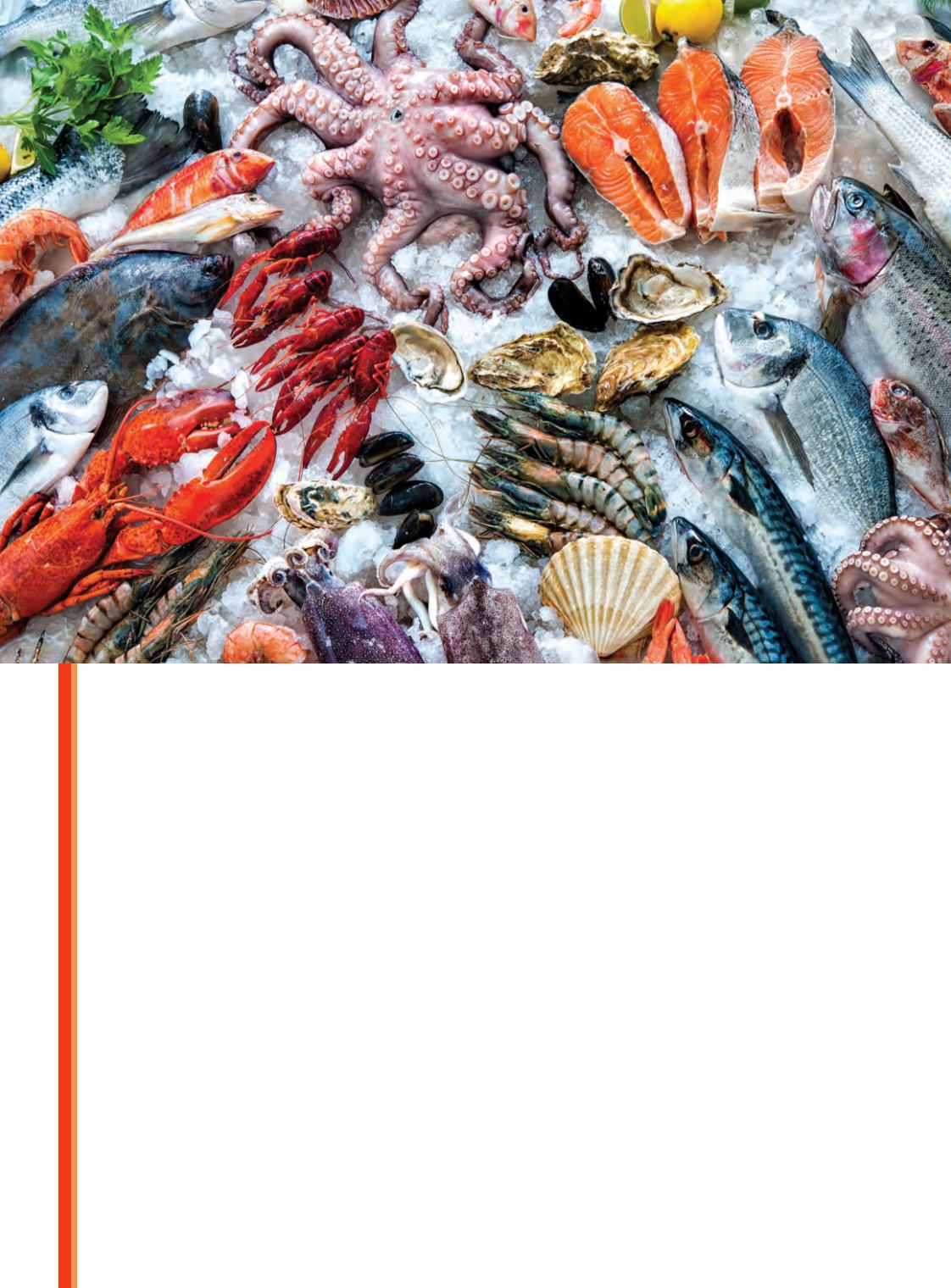

82
|
FALL 2016
B Y TW I L I GH T GR E E N AWA Y
[
[
H
aving spent time below the surface
of the ocean, divers are more likely
than most other people to care
about the various impacts of our
seafood choices. But that doesn’t
necessarily make it any easier to
decipher what it means to eat seafood sustainably.
For one, the seafood industry isn’t static. A great deal
has changed in recent years, leaving many consumers
with questions such as these: Is wild seafood always a
better choice than farmed? What’s the carbon footprint
of my choices? And where should we turn to find the
latest science-based information?
While wild seafood is still popular with many
consumers, Ryan Bigelow, outreach manager for the
Monterey Bay Aquarium Seafood Watch program,
sees the commercial fishing industry as too successful
for its own good.
“It’s one thing to go out and catch a fish with a pole
and line; it’s entirely another thing to go out with
satellite tracking, sophisticated radar and nets that are
large enough to catch a small plane," he said. "We’re so
good at it now that fish don’t really stand a chance.
“It makes a lot more sense to move away from that
— at least to some extent," he continued, "and focus on
farming, which can be done in controlled situations.”
Farmed seafood, however, has gotten a bad rap
among ecologically minded consumers — and for
good reason. Escapes, disease and pollution were often
commonplace in the early days of the industry.
“The American public still has a bad image of
aquaculture," Bigelow said. "But a lot of that is based on
Sustainable Seafood:
AN EVER-EVOLVING LANDSCAPE
ISTOCKPHOTO.COM















